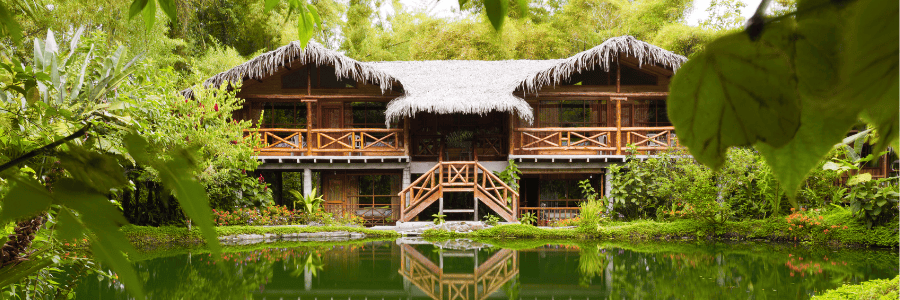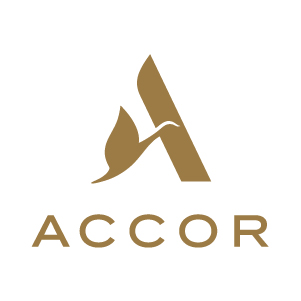The TNFD LEAP approach: A practical guide for tourism SMEs

When people fantasise about running away from the daily grinds of life, they visualise escaping to never-ending coastlines, clean blue waters, misty green caves, and endless rolling hills. Nature is the foundation of tourism as it draws millions of travellers and supports the livelihoods of countless small and medium-sized enterprises (SMEs). But as nations and the global tourism sector strives to align with the Kunming-Montreal Global Biodiversity Framework, and other sustainability mandates, it is time for SMEs to understand and manage their nature-related impacts.
Sign in to access actionable insights
When people fantasise about running away from the daily grinds of life, they visualise escaping to never-ending coastlines, clean blue waters, misty green caves, and endless rolling hills. Nature is the foundation of tourism as it draws millions of travellers and supports the livelihoods of countless small and medium-sized enterprises (SMEs). But as nations and the global tourism sector strives to align with the Kunming-Montreal Global Biodiversity Framework, and other sustainability mandates, it is time for SMEs to understand and manage their nature-related impacts.
The LEAP approach, developed by the Taskforce on Nature-related Financial Disclosures (TNFD), offers a practical starting point. Designed for organisations of all sizes, it is especially powerful for SMEs seeking to future-proof their operations while actively contributing to nature-positive tourism. Here’s how SMEs can leverage the LEAP framework to identify, assess, manage, and disclose nature-related issues in line with global standards.
What Is LEAP?
LEAP stands for Locate, Evaluate, Assess, and Prepare. It is a structured internal due diligence process to help businesses identify how their activities depend on and impact nature. Although not mandatory for TNFD-aligned disclosures, LEAP provides a comprehensive blueprint for engaging with the full scope of nature-related risks and opportunities.
1) Locate: Mapping your interface with nature
The first step is to ‘locate’ your business’s interaction with nature. For tourism SMEs, this means:
- Identifying where your operations physically overlap with ecosystems (e.g., beach resorts near mangroves or lodges in forests).
- Determining if you are operating in or sourcing from ecologically sensitive areas.
- Understanding the biomes involved (e.g., coral reefs, wetlands, alpine zones).
This phase highlights how your business model sits within the broader ecological landscape. It is about mapping direct and indirect touchpoints from energy and water use to the construction of guest facilities and supply chains. For example, an eco-lodge in a rainforest may rely heavily on biodiversity for guest experience (birdwatching, guided nature trails) and also contribute to pressure on local freshwater supplies or native flora.
2) Evaluate: Understanding dependencies and impacts
Once your nature interface is mapped, the next phase is to ‘evaluate’ your dependencies on nature and the impacts you have on it. SMEs must ask:
- What ecosystem services do we rely on? (Pollination, water purification, coastal protection, etc.)
- Are we drawing too heavily on local resources?
- Are we contributing to pollution, land degradation, or biodiversity loss?
This analysis uncovers the value that nature provides to your business and the ways your operations might threaten those very assets. For example, if a tour operator depends on coral reefs for snorkelling tours, it must consider how its boat traffic, sunscreen use, or waste disposal might be degrading that ecosystem.
The LEAP guidance suggests using ‘dependency and impact pathways’ to trace how a business both relies on and alters natural systems. This helps SMEs think long-term about ecosystem resilience and the sustainability of their operations.
3) Assess: Identifying nature-related risks and opportunities
After mapping dependencies and impacts, LEAP guides businesses to ‘assess’ their nature-related risks and opportunities. These risks can be:
- Physical (e.g., the collapse of local fish populations, coral bleaching, droughts).
- Transition-related (e.g., regulatory changes banning access to sensitive areas, shifting tourist preferences).
- Systemic (e.g., biodiversity collapse leading to regional tourism downturns).
Opportunities arise when SMEs adapt, such as launching conservation-based tours, transitioning to circular business models, or investing in ecosystem restoration. These moves boost brand value, attract eco-conscious travellers, and open doors to sustainable finance. This encourages SMEs to look beyond compliance and embrace innovation.
4) Prepare: Planning for action and disclosure
Finally, LEAP calls businesses to ‘prepare’ to act and report. For SMEs, this means:
- Setting targets aligned with frameworks like the Global Biodiversity Framework (e.g. Target 15 on corporate disclosure).
- Establishing KPIs for ecosystem impact (e.g., freshwater use, species protection).
- Creating a narrative for stakeholders, such as investors, tourists, and communities, about how your business contributes to nature positive outcomes.
This stage also involves integrating findings into your broader business strategy, like budgeting for environmental management, rethinking procurement, or collaborating with local stakeholders. Importantly, LEAP’s flexibility allows SMEs to adopt the framework without needing deep technical expertise or expensive data systems..
Why SMEs should act now
Travel & Tourism SMEs are uniquely exposed to nature-related risks. Yet they also hold unique influence. A single property or operator can become a local conservation leader, a community steward, and a magnet for conscious travellers. LEAP offers SMEs a practical, internationally aligned toolkit to understand their ecological footprint, identify hidden dependencies and exposures, comply with emerging disclosure norms, and shift towards regenerative business models. The future of tourism lies in harmony with nature. And with the LEAP approach, SMEs can begin that journey with clarity, credibility, and confidence.
Access guidance for the LEAP approach here.
Find out more on the Nature Positive Tourism Approach through the Roadmap and Toolbox.

















